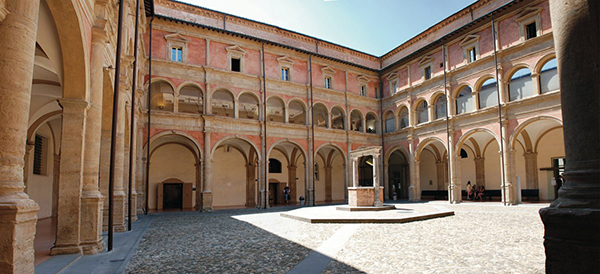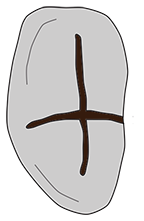KAINUA 2017
KAINUA 2017 is the Closing Conference of the three-year FIR 2013 project KAINUA. Reconstructing, perceiving, disseminating the lost reality. Transmedial technologies for the Etruscan city of Marzabotto, funded by the Italian Ministry of Education, Universities and Research (MIUR). The project aims to the philological reconstruction of the architectural structures of the Etruscan city of Kainua, that has been recreated thanks to the most innovative technologies. In this way the archaeological site and the museum will be provided by adeguate systems of perception and disclosure of the archaeological reality, fully reconstructed in all its aspects.
KAINUA 2017 is organized by the Department of History and Cultures and the Department of Architecture of Alma Mater Studiorum - Università di Bologna with the partnership of CINECA, thanks to FIR 2013 funding program.
-
Kainua 2017
April 18, 2017 – April 21, 2017KAINUA 2017 is the Closing Conference of the three-year long FIR 2013 project KAINUA. Reconstructing, perceiving, disseminating the lost reality. Transmedial technologies for the Etruscan city of Marzabotto, funded by the Italian Ministry of Education, Universities and Research (MIUR) and supported by the Superintendence to Archaeological properties of Emilia-Romagna (now Soprintendenza Archeologia, belle arti e paesaggio per la città metropolitana di Bologna e le province di Modena, Reggio Emilia e Ferrara). The project aims at the philological reconstruction of the architectural structures located in the Etruscan city of Kainua, that has been recreated taking advantage of the most innovative digital technologies. This way, the archaeological site and the museum will be provided with suitable systems of perception and disclosure of the archaeological reality, fully reconstructed in all its features.
KAINUA 2017 is organized by the Department of History and Cultures and the Department of Architecture of Alma Mater Studiorum - Università di Bologna with the partnership of CINECA, thanks to FIR 2013 funding program. The Conference is in honour of Professor Giuseppe Sassatelliʼs 70th birthday, who always encourage students and scholars to a multidisciplinary research in Archaeology. Regarding the Etruscan city of Marzabotto, his uninterrupted work has opened a new season of research and has changed the historical perspective of this city.
Venue: The International Conference KAINUA 2017 will take place in the prestigious setting of the Giorgio Prodi Lecture Hall at the Department of History and Cultures, University of Bologna.

 What does the KAINUA 2017 official icon mean?
What does the KAINUA 2017 official icon mean?The icon representing the KAINUA 2017 conference is a pebble with an engraved cross. Its importance is due to the place of its discovery. This pebble was found by the famous archaeologist G.A. Mansuelli in the summer of 1963, buried under the crossroads of the main streets in the ancient Etruscan town of Kainua. We assume that around 500 BC, Etruscans dug a pit at the bottom of which the engraved pebble was set down, orienting its engraved cross according to the cardinal points that would have later guided the roads' plan. The pit was then covered by the crossroad. Three other pebbles were found in other three crossroads, but they did not have the engraved oriented cross.
Therefore, the pebble with the engraved cross, namely the decussis according to the Roman tradition, is the materialization of the place where the construction of the town began and, above all, it is the material icon of the Etruscan ritual of foundation.
As the pebble with decussis is a symbol of the foundation rite and the construction of the Etruscan town, we chose it as a secular symbol of the process of reconstruction of ancient urban areas.

On April 19th, at the National Etruscan Museum “Pompeo Aria” in Marzabotto, the first working prototype of "Kainua VR, a virtual walk in the ancient town" will be officially presented to the conference participants.
The virtual tour can be taken using Google Cardboard with this application or experienced with Oculus Rift during the demo session in the afternoon.
Characters and costumes were made thanks to the support of



.jpg)